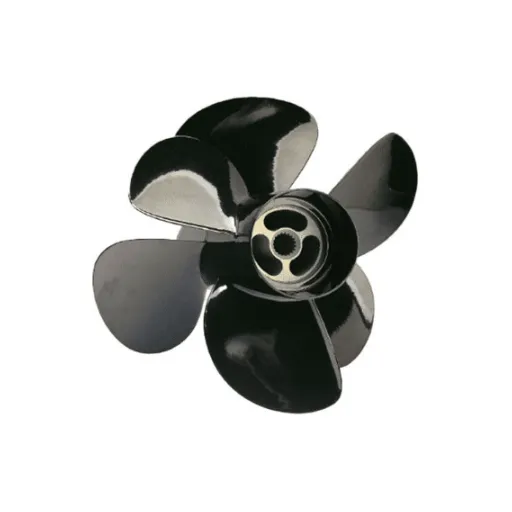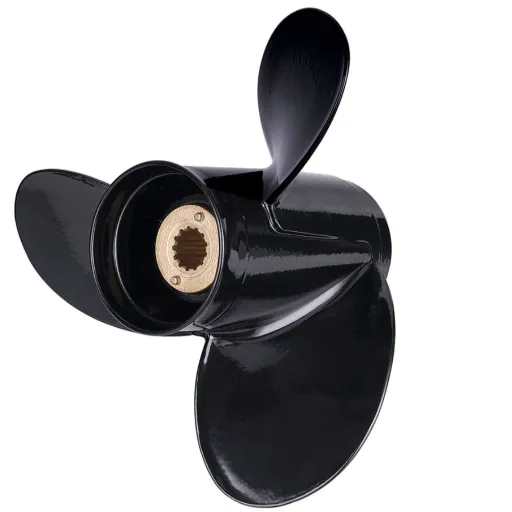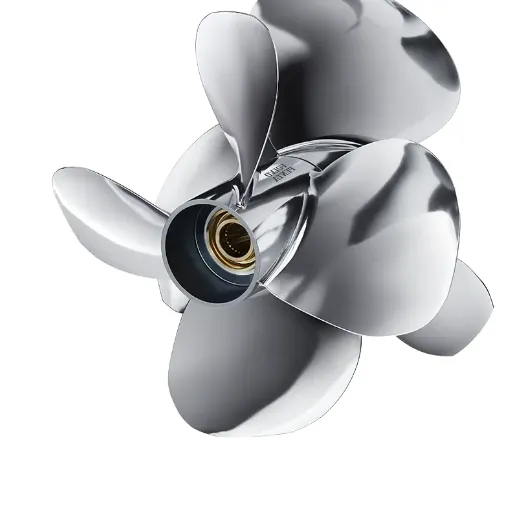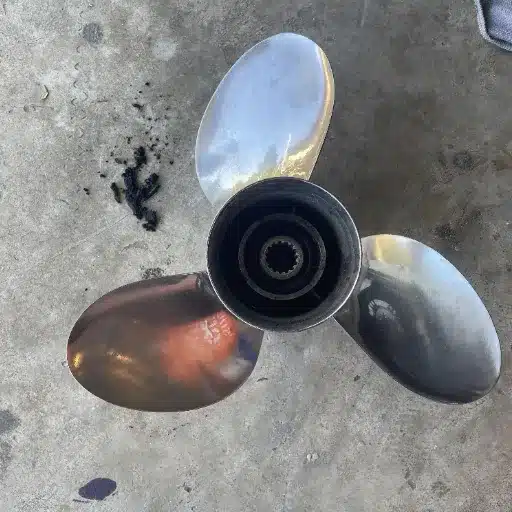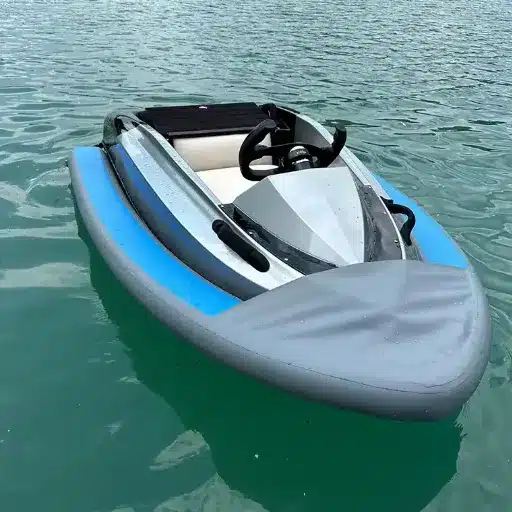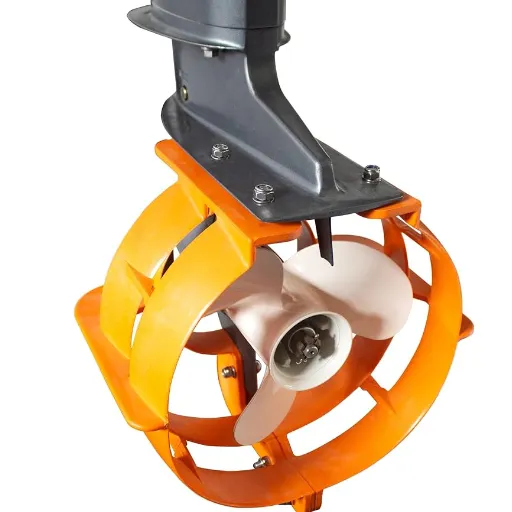Choosing the proper propeller for a boat is a decision that largely determines its capabilities and efficiency. Fuel consumption, performance on water, and maneuvering finish off the main concerns. Among some considerations, the recurring debates of three-blade or four-blade propellers are of utmost importance to every boater, from the recreational boater to the professional. Each design provides different gains and trade-offs that might affect speed, stability, or fuel consumption. My contention here is to deep dive into the major differences between 3-blade and 4-blade propellers in a way that might help you grasp the benefits and applications of either type. Thus, whether you want to optimize for speedier performance or smooth handling, this guide is sure to equip you with the necessary knowledge to make the right choice for your needs.
Introduction to Propellers
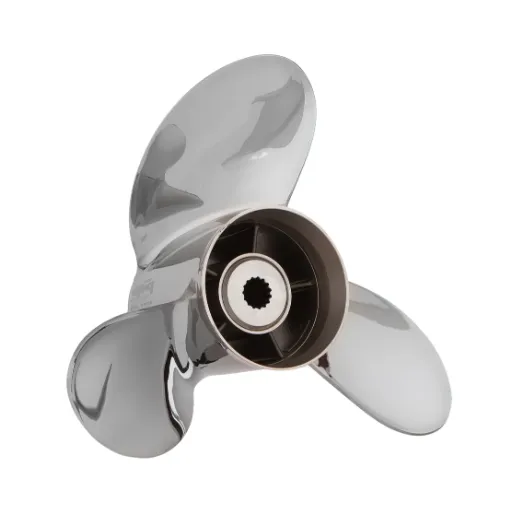
What is a Propeller?
A propeller is a mechanical device designed for the conversion of rotational energy into thrust for propulsion in a fluid medium such as water or air. Typically, a propeller will consist of a central hub and several blades carefully designed and angled for varying pressure on rotation. This pressure difference moves the vessel or aircraft forward through its respective medium.
The design of the propeller greatly affects its results. With blade number or shape, pitch, and, probably, the material used for the construction of blades, all directly affecting the ability of a propeller to efficiently transfer power from an engine into thrust, the possibilities are numerous. For example, the pitch-angle design of the blades is crucial as it determines how much water or air gets displaced by the propeller, directly affecting the speed and efficiency.
Propellers are used in marine vessels, airplanes, and industrial machinery. Their workings are based on the principles of fluid dynamics, and so they are an absolute in transport and engineering. With modern advances, it is possible to have special designs that satisfy specific performance needs, and hence, every working scenario gets the best results.
Types of Propellers: 3-Blade vs 4-Blade
3-Blade Propellers
Usually supposed to afford the best efficiency at high speed because less drag is exerted and the weight is lighter. It possesses less rotational inertia and would thus favor applications where high performance and speed are essential, such as aircraft and certain types of marine vessels. However, in some cases, 3-blade propellers produce vibration slightly more than 4-blade ones and lessen thrust at lower speeds.
4-Blade Propellers
Has more thrust at a lesser speed and greater stability. More blades mean more surface area, and this is appreciated when better handling is required in towing or heavy-load application situations marine environment. Furthermore, 4-blade propellers offer good vibrations, smooth operation, and noise reduction.
Selection between a 3-blade propeller and a 4-blade propeller is thus made on the basis of exact application needs. Typically, 3-blade propellers are used for efficiency at high speeds with less resistance. In contrast, the 4-blade propeller ensures more thrust, stability, and a smoother performance. Operational goals, environmental conditions, and load requirements are weighed to make the right choice.
Importance of Choosing the Right Propeller
Selecting the correct propeller stands as the paramount choice as its considerations on efficiency, performance, and safety are inherent in any vessel. Properly selected propellers allow the engine to work within its normal RPM range, thereby ensuring better consumption of fuel while being kind to the engine against abrasive wear. Hence, all of them lead to a pattern of reduced operational costs and increased lifetime of the equipment.
Furthermore, there are different handling and thrust capabilities offered by different types of propellers. For example, 3-blade propellers are used where the emphasis is on speed and reduced drag; these might be sport/hp boats. The 4-blade types are used in certain circumstances as they need stability and thrust or need to operate in rougher sea conditions. Different propeller options can also result in poor responsiveness, fuel economy, and even a margin for safety.
Essential factors considered for selection include the size of the boat, weight, engine power, and operating conditions. Following the manufacturer’s manuals and further consulting a marine expert (if necessary) will guide the selection to ensure the propeller meets the special requirements of the vessel and its working conditions. This matching between the propeller and operational conditions has to be considered at all times for the finest performance at sea.
Performance Comparison
Top Speed: 3-Blade vs 4-Blade
When analyzing the top speed performance of three- versus four-blade propellers, one must take into account their different design characteristics. Because it creates less drag and has a lighter rotational mass, a 3-blade propeller tends to give a higher top speed. This characteristic allows for less water resistance and makes the engine power less affected at high RPMs, creating very well conditions for high velocity-required applications: speedboats and some recreational crafts.
Conversely, good thrust, handling, and stability are the hallmarks of a 4-blade propeller rather than high speed. More blades mean more surface area touching the water, thus increasing grip and maneuverability at the cost of slight maximum speed. 4-blade propellers are thus more suited to vessels operating heavy loads in rough waters or scenarios in which keen handling, such as towing, is paramount.
⚡ Performance Insight
Test conditions and engine tuning also alter outcomes with regard to tests. Ideally, a 3-blade propeller can give a speed advantage of maybe 5 to 10% over a 4-blade propeller. However, the degree to which such measurements are achieved depends largely on the hull design of the boat being used, the engine used, and the usage pattern anticipated, thus raising the necessity for custom-fitting the propeller to the needs of operation.
Acceleration and Thrust
Acceleration and thrust, due to propeller design and configuration, directly affected performance. The thrust is generated because of the pressure difference created between the forward and aft surfaces of the blades, henceforward forcing the water through which the vessel moves. How efficiently thrust is produced depends on the blade pitch and diameter, and also on the type of material from which the propeller is made.
Acceleration, along with high thrust, is advantageously possible with propellers of lower pitch angles because they provide more power for initial thrust, starting the movement at a quicker pace from rest. This is especially needed for towing cases or for any occasion of quick speed variation. On the other hand, those that have a higher pitch are a little less effective as far as acceleration is concerned, but become handy when maximum maintaining speed is required.
🔬 Recent Research Findings
According to recent findings, improvements in propeller geometry and the application of composite materials have greatly improved thrust efficiency and acceleration capability. The simulations generated by Computational Fluid Dynamics (CFD) show that optimized blade profiles reduce cavitation and improve water flow dynamics, thereby improving energy transfer and less drag. For instance, progressive pitch concepts were shown to increase thrust by a factor of 15%, thus deserving major consideration in the design of contemporary propellers.
Handling Different Water Conditions
Handling different water conditions is very important in propeller design and optimization. Salinity, temperature, and density changes affect propeller performance with respect to thrust efficiency and cavitation behavior. More specifically, the higher water density in saline waters requires adjustments for blade pitch and surface area to lift the performance to its optimum. Meanwhile, in colder water, viscosity is relatively high; hence, engineers need to pay more attention to the resistance forces to reduce energy losses and keep consistency in propulsion efficiency.
Thus, operating such conditions calls forth advanced CFD simulations to model flows of water to estimate how varying conditions interact with hydrodynamic behavior. With a data-driven approach, engineers can optimize their designs for blade material and coatings that prevent corrosion in saline water or biofouling in warmer present-day waters. Real-time performance feedback provided by integrated monitoring systems on modern marine vessels allows performance adjustment with changes in operational conditions without compromising efficiencies.
In such an environment, propellers are not just designed for optimum performance in controlled conditions but are made adaptable to an ever-dynamic and quite unpredictable actual open water environment.
Fuel Efficiency and Cost Considerations
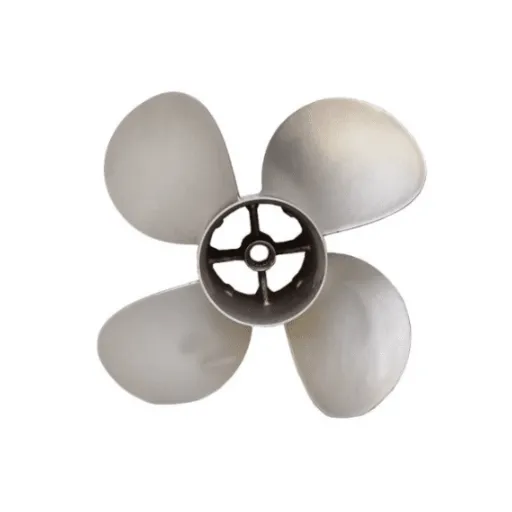
Fuel Efficiency of 3-Blade Propellers
In general, three-blade propellers are considered a compromise with performance, efficiency, and durability, being favored by almost all marine applications. In their operation, they generate thrust while keeping drag to a minimum. Also, a three-blade propeller will generate less turbulence than a two-blade one and thus operates in a much smoother manner, rendering it highly hydrodynamically efficient in open-water scenarios.
Based on testing and industrial data, 3-blade propellers deliver fuel efficiency best at medium-high cruising speeds. With diesel-powered craft, they improve fuel burn rates by unloading the engine at normal operational loads. Further enhancements in materials and propeller manufacturing technology — CAD-based design and precision casting techniques — have made it possible for these propellers to reach 10-15 percent better fuel consumption with modern hull designs when compared to conventional ones.
With appropriate tuning and calibration (e.g., optimizing blade pitch), one can further reduce fuel usage by utilizing 3-blade propellers. Propulsion studies stress further the importance of regular maintenance schedules, including inspections for fouling and damage, since both factors impact fuel economy and performance. This triad of aerodynamic blade design, real-time performance monitoring systems, and computational fluid dynamics-based modeling continues pushing the fuel economy boundaries for 3-blade-propeller-equipped vessels.
Cost of 4-Blade Propellers
4-blade propellers are considerably more expensive than 3-blade propellers because of the increased manufacturing complexity, materials, and superior performance. In general terms, however, the price of a 4-blade propeller can range anywhere between $1,500 and $5,000, depending on size, material (aluminum, stainless steel, or composite), and use. In custom applications with heavy vessels or high performance, the cost of four-bladed propellers can be much higher, based on precision engineering and performance specification tuning.
| Material Type | Price Range (3-Blade) | Price Range (4-Blade) |
|---|---|---|
| Aluminum | $500 – $1,500 | $800 – $2,200 |
| Stainless Steel | $800 – $2,500 | $1,500 – $4,000 |
| Composite | $1,200 – $3,500 | $2,000 – $5,000+ |
Operational costs and related value considerations are equally important to factor into the total cost of ownership for 4-blade propellers. Though the upfront price is a bit high, performance gains can translate into better fuel economy and less vibration. At lower speeds, they provide a little more thrust than 3-blade propellers and are thus beneficial to heavier vessels or vessels in rough conditions. All these benefits would translate to higher operational savings in the long term, considering these propellers are properly maintained with regular checks and cleanings to keep potential fouling and mechanical damage at bay.
In the end, 4-blade propellers, with their higher initial cost, also have better operational benefits and lifecycle performance. Actual evidence suggests that vessels fitted with 4-blade propellers remain more maneuverable with decreased cavitation and less wear and tear on propulsion systems. For vessel owners or operators that value efficiency, longevity, and noise reduction, the premium price for 4-blade systems may well prove to be a worthy investment down the road. Equipped with CAD design and CFD modeling, manufacturers design great 4-blade propellers, further assuring that buyers find value in paying the premium price.
Long-Term Maintenance Costs
The immense maintenance cost of 4-blade propellers is attributed to their sturdy design and the reduced stress exerted on them during operation as compared to other propellers having two or three blades. As a consequence of their smoother rotation and reduced possibilities of cavitation, wear and tear on the material due to fatigue are less with time. The consequently enhanced longevity of the propellers, together with less maintenance of the key components such as shafts and bearings, due to lesser stresses imposed on them during an operation, has its final toll on maintenance expenditure.
💰 Commercial Industry Savings
The lower frequency of repairs and less downtime are some of the benefits of 4-blade propellers in the commercial maritime industry. For example, there are studies on medium-sized cargo ships claiming maintenance costs can be reduced between 15 and 20 percent every year after 4-blade designs have been installed, considering regular polishing and blade repairs.
Moreover, the use of predictive analytics and sensor-based monitoring systems can help in even better scheduling of maintenance. Such techniques enable an operator to spot the early evidence of wear, corrosion, or imbalance and take care of minor problems before they become expensive repairs. In the long term, of about 10-15 years, the operator will clearly know where the money has been going and realize the savings that ensure that the higher initial 4-blade propeller purchase price will pay for itself.
Pros and Cons of 3-Blade and 4-Blade Propellers
✅ Advantages of 3-Blade Propellers
- Greater Speed Potential: In various applications, 3-blade propellers exhibit the privilege of attaining higher top-end speeds owing to less drag and less resistance from the blades. The less surface area, compared to that of 4-blade propellers, means less hydrodynamic drag, thus allowing ships or planes to travel toward their maximum velocity.
- Better Fuel Consumption Rate: With less resistance caused by fewer blades, 3-blade propellers tend to demand less power, thus yielding better fuel consumption. Hence, they are more preferred in activities that have fuel cost cutbacks as the target.
- Lower Capital Investment: Given the lesser material and engineering complexities involved in the manufacturing of 3-blade propellers, these tend to be less expensive to produce. This, in turn, cuts down the initial cost for the operators as to their 4-blade counterparts.
- Better Agility and Maneuverability: An increase in response time by having a reduced mass and rotational inertia makes 3-blade propellers highly maneuverable. This enhanced maneuverability allows the application of more precise control in areas where dynamic changes in direction or rapid changes in control are essential.
- Lightweight Design: Being fewer in number, 3-blade propellers are generally lighter. This reduces the overall weight of the system, which can otherwise enhance acceleration and climb rates for aircraft or faster starts for marine vessels.
❌ Disadvantages of 3-Blade Propellers
- Reduced Efficiency at Low Speeds: Considering the 3-blade propellers, they may sometimes lose some efficiency at slow speeds from that of 4-bladed or 5-bladed varieties. This is attributable to the smaller blade surface area, that is, less capacity to convert thrust at slower speeds during taxiing or slow cruising in either an aircraft or a marine vessel.
- High Noise Levels: The less number of blades on a 3-blade propeller means it produces larger tonal noise during operation. This is because individual blades produce individuation pressure waves as they cross through the air/water, thus rendering it higher acoustically than those with extra blades. Research, for instance, demonstrates noise levels about 2-4 dB louder for 3-blade compared to 4-blade arrangements in equivalent setups.
- Less Stable Under Heavily Loaded Situations: Heavy-load scenarios like high-torque needs or towages somewhat give a 3-blade propeller less stability compared to its multi-blade rival. This is attributed to lower total blade area, which results in uneven stress distribution as well as a bit less efficient force transmission on scalp-demanding scenarios.
- High-Altitude Performance Limitations: In cases of aircraft applications, the 3-blade propellers experience difficulties while operating at higher altitudes characterized by low air density. Due to a reduction in the total blade area, their propulsion efficiency takes a backseat, making them less competent in operations designed to offer maximum service at high altitudes.
- Constraints in Large-Scale Application Designs: When scaling for large vessels or high-power systems, 3-blade propellers will encounter a few obstacles to achieve good performance. Because the smaller total surface area of the blades can restrict the thrust capabilities, alternate designs with more blades than the three ones have to be considered to fulfill the demand for higher power output and larger operational environments.
4-Blade Propeller Pros and Cons
In most cases, a 4-blade propeller is considered to have performance advantages over 3-blade varieties, especially when thrust and smooth operation are considered. Therefore, here is a list of the pros and cons related to 4-blade propellers:
✅ Pros
- Enhanced Thrust Capacity: The larger number of blades results in an increase in surface area for thrust production. This kind of configuration is mostly applied in heavy engineering situations where power requirements are a priority.
- Makes Propulsion Smoother Under Turbulent Conditions: Stability offered by an extra blade makes movement smoother in chillingly turbulent, agitated waters.
- Reduces Vibration: Having an evenly distributed symmetry of four blades around the hub ensures an appreciable reduction in the levels of vibration and noise during the working modality of the unit. This is further advantageous where comfort and precision matters-most luxury yachts or state-of-the-art UAVs.
- Perform Better at Low RPMs: Four-blade propellers become more efficient at lower rotation speeds, ensuring optimal fuel consumption and quiet operation for ships needing endurance over extended missions, such as fishing trawlers or coast guard ships.
- Better Cavitation Resistance: With a greater blade area ratio, four blades distribute forces more evenly, thus alleviating cavitation effects and allowing consistent high power operation.
❌ Cons
- Lower Maximum Speed: Drag induced by the fourth blade lowers maximum speed potential compared to a 3-blade, making the 4-blade undesirable for speed-critical applications such as sports boats and racing aircraft.
- More Expensive to Manufacture and Heavier: The complex carving and balancing requirements for 4-blade designs increase their production costs. In addition to the impediment of more weight, requiring perhaps heavier drive systems will also be costly in applications of small or lightweight vessels.
- Less Efficient in Light-Load Situations: In operations where power output demands are minimal, the proportional increase of the conductive blade surface area is an unnecessary drag, thus reducing overall efficiency.
- Maintenance: Distribution of wear and tear over additional surfaces could make routine check and repair work more tedious than in simpler 3-blade designs.
Summary: Taken in all, 4-blade propellers are best where thrust, stability, and smoothness are desired in contrast to speed and cost efficiency. The advent of Computational Fluid Dynamics (CFD simulations) has recently supported the advantages of the 4-blade propeller design, and the very fact that they have seen operational success in applications where durability and power delivery are of paramount importance.
2025 Trends in Propeller Technology
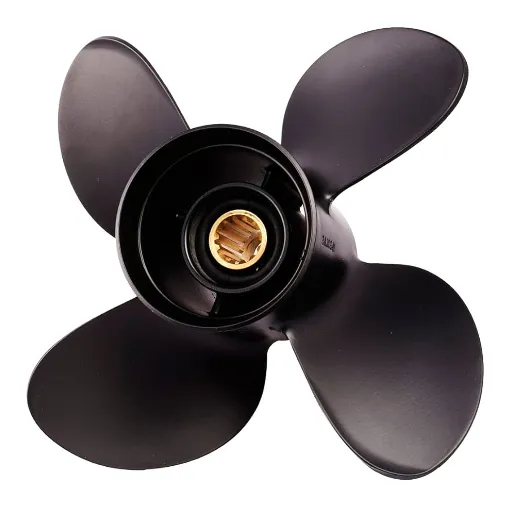
Emerging Technologies: Electric Jet Ski Impellers
Having electric jet ski impellers instills the possibility for a more sustainable and efficient method of watercraft propulsion. These impellers set about working hand-in-hand with electric motors to achieve efficiency gains and reduce environmental impact by a very big margin. There are no direct emissions from electric jet skis, unlike conventional jet skis powered by internal combustion engines, thus reiterating the demand to go for cleaner sources of energy across the globe.
The incorporation of lightweight materials such as composites improves efficiency by reducing drag and improving the overall hydrodynamic profile. Furthermore, it incorporates state-of-the-art technology for custom impeller geometry, variable pitch mechanisms for higher thrust, and quieter operation. These improvements not only help in speed and maneuverability but also heighten user delight.
📈 Market Growth Data
On the other hand, battery advancements for increased runtime and faster charging have put electric jet skis on a par with their traditional counterparts concerning performance. With the burgeoning demand for greener recreational vehicles, electric jet ski impellers seem set to have a pivotal role in the future of the personal watercraft industry. Data from recent studies indicate this trend, recording annual growth rates surpassing 10% in the sale of electric watercraft driven by these technological advances.
Advancements in Composite Materials
Advanced composite materials have paved the way for innovations in personal watercraft, most substantially in the production of electric jet skis. Such materials are combinations that include polymers, carbon fibers, among other high-strength ingredients, which provide the best-ever combination of strength and lightness. With the composites lowering the overall weight of watercraft, their handling gets better, their top speed can be increased, and higher energy efficiency can also be attained, the very attribute that considers an electric jet ski as a performance vehicle.
From a sustainability consideration, composites lend a great hand. Many modern composites have been created with an attempt toward recyclability so as to allow reduced environmental impact in their manufacturing. This fits perfectly into the environmental greening behind the demand for electric-type watercraft. Use of advanced materials also hampers tibia-wear and tear, thereby extending vehicle life and reducing frequent replacements.
Personally, I consider it an important turning point for the industry due to these developments in measurement composites. Apart from boosting performance, these developments exhibit the possibility of aligning innovation with the environment. Further developments in lightweight yet strong materials that are friendly make the future exciting for electric jet skis and the whole recreational vehicle arena.
Future Trends in Propeller Design
Most new technologies in propeller design seem to target improvements in efficiency and durability, with the environmentally friendly angle never far behind. Methods seen to be developing include high-end computational fluid dynamics (CFD) simulations to shape propellers optimized for producing the greatest thrust with the least amount of energy. This has allowed the manufacturer to design blades that significantly reduce drag while increasing performance.
Another finger is on the pulse of materials, where light-yet-strong options such as carbon fiber and titanium hybrids are being tested. Such materials increase the life expectancy of propellers and also help increase speed and fuel efficiency by a thin margin, especially for electric vehicles. Designs dictated by biomimicry are also being entertained, as good marine life-based designs-one inspired by the fins of a humpback whale-offer better stability and noise reduction.
Another development being ushered in is modular and customizable propeller systems that will allow manufacturers to adapt to very specific performance objectives or environmental conditions. It makes for an excellent avenue, together with 3D printing, to help bring individual design concepts out fast and at a reasonable price. Looking forward, in imminent times, propeller design shall undergo a complete rehaul, eagerly powered with modern-day computer technologies, set assault materials, and sustainability.
Frequently Asked Questions (FAQ)
Q: What are the main differences between three- and four-bladed propellers?
The fundamental differences between a 3-blade prop and a 4-blade prop are in design and performance. A 3-blade prop usually has a lower blade area-to-weight ratio and thus attains a higher speed and is better fuel-wise at cruising speed. In contrast, the 4-blade will offer better acceleration and grip on the water for heavy boats or those that need to accommodate heavier loads.
Q: Which propulsion system is suitable for recreational boats: 3-blade or 4-blade?
It really depends on the motor and the actual use of your boat. Under normal circumstances, if your recreational boat is used for speed and efficiency, then a 3-blade prop will probably suit you better. However, if the boat is being used for trolling more often and low-speed performance is most important for heavier boats or lower-horsepower engines, then the 4-blade will provide the required grip and stability.
Q: How does a 4-blade affect boat performance?
A 4-blade propeller increases boat performance in acceleration, grip on water, and ventilation problems. Particularly helpful will be for boats that require increased blade area for high-speed engagements or for boats that carry a heavier load. This also gives the ability to reduce the diameter of the blade.
Q: Can 3-blade props give higher speeds compared to 4-blade?
Yes, 3-blade propellers generally generate more speed because of less drag and fewer blades. This advantage, however, is compensated for by reduced handling grip on water in rough conditions or when carrying heavier loads. It is all trade-offs and has to be a decision based on your boat’s needs.
Q: What must be accounted for when choosing between a 3-blade and a 4-blade?
In choosing 3-blade vs. 4-blade props, consideration must be had for your boat’s horsepower, the type of boating activities engaged in, whether speed or acceleration is more important to you, diameter, and pitch of the propeller, which influences the performance of the boat, and it’s essential to match the two.
Q: Do 4-blade props offer more resistance to dragging than 3-blade ones?
As a general rule, 4-blade props offer slightly more drag than 3-blade ones due to the larger area of blade surface. However, it makes up for this because it can provide better grip and stability in rough seas or when the boat is heavily loaded.
Q: Will the type of prop influence fuel economy?
The choice of a prop has an impact on fuel economy. Typically, a 3-blade prop can get you to higher speeds with less horsepower, so it would be more fuel-efficient cruising. In contrast to this, a 4-blade prop may tend to guzzle fuel at higher speeds but can be more efficient at low speeds and in acceleration, especially for heavier boats.
Q: Can a 4-blade help eliminate ventilation problems?
One reason ventilation problems may be eased or eliminated is a 4-blade prop. Ventilation occurs when air is drawn to the propeller blades because of cavitation or other causes. For a 4-blade prop, the greater blade area makes for more contact with the water, which prevents air from being sucked into the blades and ensures more uniform performance, especially at lower speeds.
Q: Does blade number have any effect on trimming and handling?
The number of blades may affect trimming and handling. Four-bladed propellers generally have better stability and handling at all speeds, thus easing trimming; in contrast, three-bladed ones tend to require a more precise trim adjustment to enable their peak performance, especially when conditions are variable or when speed is trying to be maintained.
References
- Aircraft Propellers – Introduction to Aerospace Flight Vehicles
This source discusses the efficiency of propellers with different blade counts and their specific performance characteristics. - 11.7 Performance of Propellers
A detailed explanation of propeller blade performance, including lift, drag, vortex systems, etc. - Chapter 7 – Propellers (FAA)
A detailed publication by the FAA deals with propeller blade angles, pitch, and their effect on performance. - Click here to read more.




